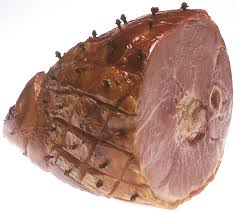 And our 12th fake food of Christmas is… processed meat. That’s right: the Christmas ham, bacon, sausages, salami, you name it.
And our 12th fake food of Christmas is… processed meat. That’s right: the Christmas ham, bacon, sausages, salami, you name it.
We know what you are saying. BUT THEY ARE CHEAP AND TASTE SO GOOD!
Processed and preserved meats are certainly a cheap, convenient and tasty option. However as we have seen time and time again, this convenience comes at a cost that isn’t on the price tag: a cost to our health.
Regular consumption of processed meats appears to increase your risk of heart disease and diabetes. Eating any processed meat seems to damage the lining of our digestive system, raising the risk of various cancers such as colon cancer.
Over two-thirds of Kiwis eat processed meats at least once a week. New Zealand has high rates of diabetes, heart attacks and colon cancer and our high intake of processed meat, alongside our low fibre intake is a major driver.[i]
Scientists don’t yet fully understand why processed meats cause so much damage. For heart disease it might be the high levels of saturated fat and salt in processed meats that creates the problem. Remember too much of these little nasties can increase levels of bad cholesterol and blood pressure, raising the risk of heart attacks and strokes. As little as 100g of bacon, sausage, ham or salami can contain more than your daily dose of salt.
However current thinking is the sodium nitrate (or nitrite, they are similar) in processed meats is the real nasty. This is also seems to damage the linings of the blood vessels around the heart, causing them to narrow and harden. The links to diabetes are more mysterious, but are probably also linked to nitrates.
Nitrates act like a bit like free radicals. This means they are very reactive chemicals, and go around stealing bits of other molecules. This property is what allows them to kill bacteria and therefore preserve meat for longer. The trouble is that the carry this property when they pass through the body. Cells damaged in this way are basically the seed of cancer.
Finally, let’s look at why processed meats are so cheap. Firstly stacking them full of salt and nitrates allows them to keep for longer, which cuts down on wastage. These additives also allow manufacturers to pump the meats full of water to make them appear bulkier and more succulent.[ii] This is why so much water comes out on the BBQ when you cook cheap sausages and bacon.
Processed meats are also generally made using the leftover bits. From one perspective it is nice to see food not wasted, but from another you have to wonder what you are eating. Take sausages, for example. Our Food Standards Authority regulates what gets put in a sausage. It has to be at least 50% lean meat (although that includes things like connective tissue). The rest is up to the manufacturer, as long as there is only half the amount of fat as there is meat. No wonder a kilo of sausages is cheaper than a kilo of real meat.
Incredibly, some products still don’t meet this rather loose guideline. You’ll notice that Sizzlers carefully don’t mention the word ‘sausage’ anywhere on the packaging. They’re an ‘affordable skinless pre-cooked meat product’. Not calling them sausages means manufacturers can get around any pesky regulations and put in whatever they like.
All in all, you are better off sticking to fresh meat. If that doesn’t have enough flavour, marinate it or season it. And if you want to store it for a long time, get a freezer. Freezing meat seems to be a far healthier option. Save the preserved meats for real treats, like the Christmas BBQ.
[i] World Cancer Research Fund / American Institute for Cancer Research. Food, Nutrition, Physical Activity, and the Prevention of Cancer: a Global Perspective. Washington DC: AICR, 2007.
[ii] McLean, R et al (2010) Discussion Document on Sodium and its Effects on Food Safety and Human Health. Otago University Report for New Zealand Food Safety Authority
This blog is part of a series – “The twelve fake foods of Christmas”
We don’t want to get all bah humbug about your Christmas celebrations, after all this is the one time of year you should be able to let your hair down a bit and not feel guilty about it. But it is a good time to highlight some of the fake foods that can cause some damage if we get into the habit of eating them. We’ve particularly targeted the foods that are marketed to us as “healthy” in an effort to get us to eat them every day, when in fact they are complete junk and should be confined solely to the annual Christmas binge.
Other posts:
12 Fake Foods of Christmas no.1: Cereal Killers
12 Fake Foods of Christmas no.2: Low Carb Beer Belly
12 Fake Foods of Christmas no.3: Chip on Your Shoulder
12 Fake Foods of Christmas no.4: Gettin’ Saucey
12 Fake Foods of Christmas no.5: Just Juice?
12 Fake Foods of Christmas no.6: Nothing to make this a Happy Meal
12 Fake Foods of Christmas no.7: When is Fruit no Longer Fruit?
12 Fake Foods of Christmas no.8: Time to Raise the Bar
12 Fake Foods of Christmas no.9: Milky Goodness
12 Fake Foods of Christmas no.10: Humble Pie
12 Fake Foods of Christmas no.11: Energy in a Can

